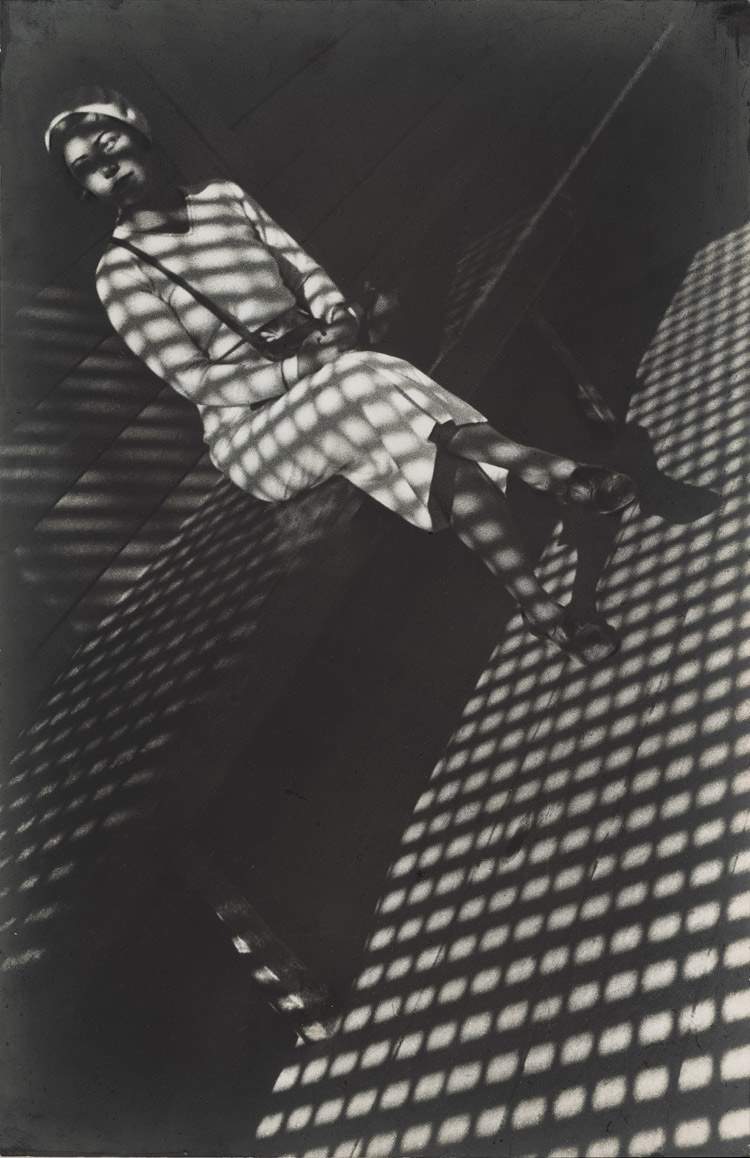Entitled Alexander Rodchenko. Revolution in photography the exhibition that from March 29 to May 27, 2018 brings to Mantua, in the rooms of Palazzo Te, the photographs of Alexander Rodchenko (St. Petersburg, 1891 - Moscow, 1956), one of the greatest Russian avant-gardists of the 20th century. Approximately one hundred and fifty photographs taken from original negatives from the 1920s and 1930s that reconstruct one of the main moments of the Russian avant-garde, a unique phenomenon in the 20th century: Rodchenko was one of the major protagonists of the period, endowed with a talent capable of ranging from painting to design, theater to photography, cinema to typography. The photographs, exhibited in the Fruits and coming from the Multimedia Art Museum in Moscow, have been selected by curator Olga Sviblova to create an itinerary that restores as comprehensively as possible Rodchenko’s conceptual thinking, the constructivist ideology underlying his work, and his conception of photography as a tool for the visual representation of dynamic intellectual constructions.
“Father of Soviet photography” according to critics, Rodchenko gave birth to a unique style that combined diagonal composition, foreshortened perspective, unusual camera points, and ingraining of details (i.e., the elements of the so-called “Rodchenko Method”) with a romantic streak that inspired his thinking. The exhibition displays a number of works such as the 1922Caricature Self-Portrait exhibited along with a substantial body of portraits, The Staircase of 1930 and Girl with a Leica of 1934, works that embody well the innovative principles of the Rodchenko Method. Again, images drawn from industrial reality such as AMO Automobile Factory of 1929, and again parades of gymnasts and athletes, architectural photographs such as the 1929 image of Shukhov Tower and the Moscow Electric Bulb Factory series made at the turn of the 1920s and 1930s. Space is also given to journalistic photography with photojournalism.
“Rodchenko’s entire photographic oeuvre,” reads the exhibition presentation, “highlights the main goal of his poetics: the transformation of the present in the name of the future and the possibility of a positive transfiguration of the world and humanity. ’I have created today in order then, tomorrow, to seek the new,’ Rodchenko writes, ’although it will seem nothing compared to what was made yesterday. On the other hand, the day after tomorrow I will surpass what has been done today.’ In the entire history of Russian photography of the first half of the 20th century, Alexander Rodchenko is the only one to have left, through his articles and diaries, incomparable testimonies: reflections on the art of a photographer-thinker, a participant in a historical cataclysm that had generated in him a dramatic conflict between conscious assumptions and an unconscious urge to create.”
“Rodchenko brought constructivist ideology inside the world of photography and devised methods and tools for the application of these principles, which saw rapid resonance, not only with students and professionals who shared his ideas, but also with political and aesthetic opponents,” explains curator Olga Sviblova. “However, the use of the ”Rodchenko method,“ which consisted of diagonal composition, which he discovered, as well as foreshortened perspective and other techniques, did not automatically guarantee the artistic dimension of a work. Of Rodchenko’s work as a photographer, not only the formal devices for which he was so mercilessly criticized in the late 1920s were understood, but also the deep romantic streak that had marked him since his student days: one need only recall the imaginary letters he wrote to Varvara Stepanova at the beginning of their relationship. This romantic aspect, intimately rooted in the artist since his childhood, spent backstage at the theater where his father worked, was transformed into the mighty utopian thought of the constructivist Rodchenko, with its faith in the possibility of a positive transfiguration of the world and humanity.”
The exhibition can be visited on Mondays from 1 to 7:30 p.m. and Tuesday through Sunday from 9 a.m. to 7:30 p.m. It can be accessed with the ticket that allows a visit to Palazzo Te and all its temporary exhibitions: full 12 euros, reduced 8 euros (for visitors over 65, groups of at least 20 people, TCI, FAI and ACI members, citizens residing in the municipality of Mantua, Vittoriale entrance ticket holders, Torino Piemonte season ticket, Associazione Circoli Cooperativi Lombardia card, Mantova Outlet Village card, Trenord train ticket with destination Mantua on a date not earlier than three days before the visit), special reduced 4 euros (children between 12 and 18 years old and university students), free for children under 11 years old, one accompanying person per group, two teachers per school group, journalists, ICOM card holders, police, Carabinieri, Guardia di Finanza, Penitentiary Police, Forestry Corps, Fire Brigade. The exhibition Alexander Rodchenko. Revolution in photography is produced and organized by the Ministry of Culture of the Russian Federation, the City of Mantua, the International Center for Art and Culture at Palazzo Te, the Civic Museum of Palazzo Te and the Multimedia Art Museum in Moscow, with the collaboration of the Italian Institute of Culture in Moscow, in synergy with Russian Seasons. Info at www.centropalazzote.it.
Pictured: Alexander Rodchenko, Girl with a Leica (1934; silver gelatin print from the artist’s original negative; Moscow, Collection of the Multimedia Art Museum). © A. Rodchenko - V. Stepanova Archive/ Multimedia Art Museum, Moscow
 |
| Alexander Rodchenko's photography is on display at the Palazzo Te in Mantua |
Warning: the translation into English of the original Italian article was created using automatic tools. We undertake to review all articles, but we do not guarantee the total absence of inaccuracies in the translation due to the program. You can find the original by clicking on the ITA button. If you find any mistake,please contact us.